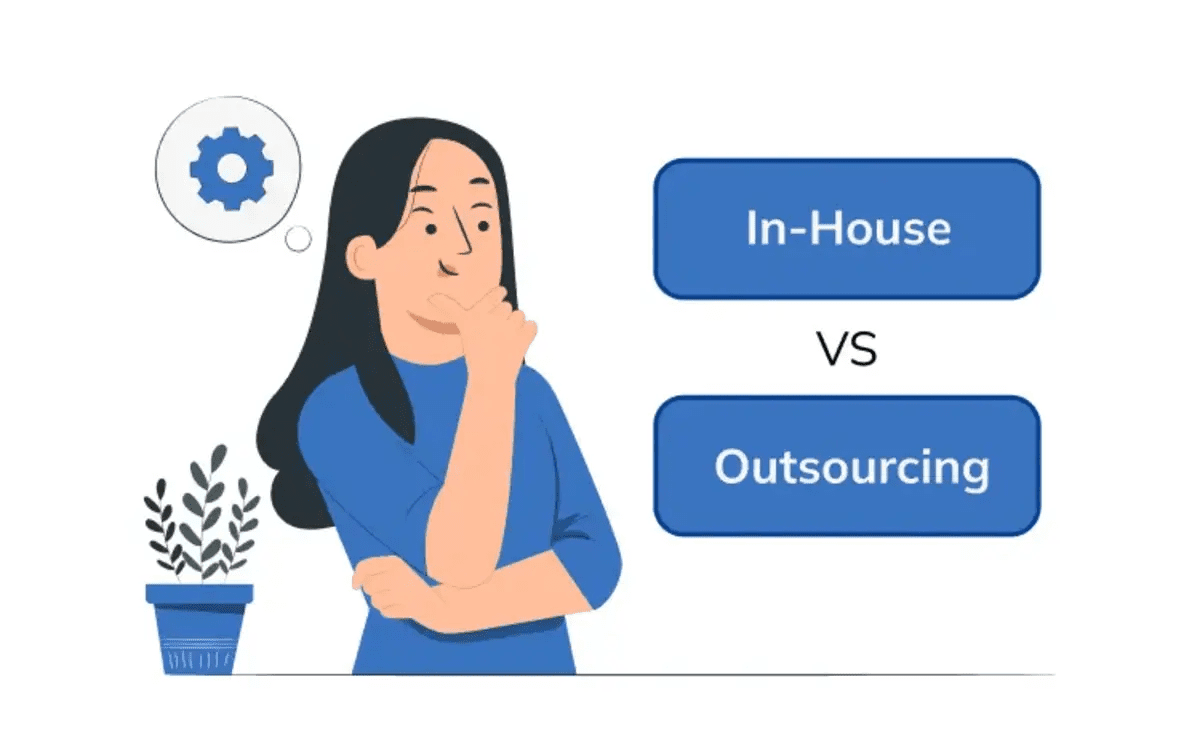In the dynamic world of healthcare revenue cycle management, healthcare organizations face a critical decision: whether to manage billing operations in-house or outsource them to external partners. Each approach offers its own set of advantages and challenges, and the choice between outsourcing and in-house billing requires careful consideration of various factors. Let’s delve into the pros and cons of outsourcing vs. in-house billing to help healthcare organizations make informed decisions about their revenue cycle management strategies.
Outsourcing Billing
Outsourcing billing involves partnering with third-party vendors or offshore providers to manage revenue cycle operations, including claims processing, coding, and accounts receivable management. Here are some pros and cons of outsourcing billing:
Pros
- Cost Savings: Outsourcing billing can result in significant cost savings for healthcare organizations, as external vendors often offer competitive pricing models and lower overhead costs compared to maintaining an in-house billing department.
- Access to Specialized Expertise: Outsourcing providers typically employ billing specialists with specialized expertise in coding accuracy, compliance regulations, and revenue cycle management best practices. Healthcare organizations benefit from access to this specialized talent pool without the need for extensive training or recruitment efforts.
- Scalability and Flexibility: Outsourcing billing allows healthcare organizations to scale resources up or down based on fluctuating demand and seasonal variations. External vendors can quickly adjust staffing levels and resources to accommodate changes in workload, ensuring optimal efficiency and flexibility.
- Advanced Technology Solutions: Outsourcing partners often leverage advanced technology solutions, such as cloud-based billing platforms, automation tools, and predictive analytics, to streamline billing processes, accelerate claims processing, and improve operational efficiency.
Cons
- Loss of Control: Outsourcing billing entails relinquishing a degree of control over revenue cycle operations to external vendors, which may pose challenges in terms of transparency, communication, and accountability.
- Dependency on Third-Party Providers: Healthcare organizations rely on external vendors to manage critical billing functions, and any disruptions or issues with the outsourcing partner can impact revenue cycle performance and patient satisfaction.
- Security and Compliance Risks: Outsourcing billing raises concerns about data security and compliance with regulatory requirements, such as HIPAA (Health Insurance Portability and Accountability Act). Healthcare organizations must ensure that outsourcing partners adhere to strict data security protocols and compliance standards to protect patient information.
In-House Billing
In-house billing involves establishing and managing billing operations internally within the healthcare organization, utilizing dedicated staff and resources. Here are some pros and cons of in-house billing:
Pros
- Control and Oversight: In-house billing offers healthcare organizations greater control and oversight over revenue cycle operations, allowing for direct supervision of billing processes, staff performance, and compliance with internal policies and procedures.
- Customization and Flexibility: In-house billing enables healthcare organizations to tailor billing processes and workflows to suit their specific needs, preferences, and organizational goals. Customization allows for greater flexibility in addressing unique billing challenges and adapting to changing regulatory requirements.
- Immediate Access to Information: In-house billing provides healthcare organizations with immediate access to billing data, analytics, and performance metrics, facilitating real-time decision-making, reporting, and analysis of revenue cycle performance.
Cons
- Higher Costs: In-house billing typically involves higher costs associated with staffing, training, technology infrastructure, and administrative overhead. Healthcare organizations may incur significant expenses to establish and maintain an in-house billing department.
- Staffing Challenges: Recruiting, training, and retaining skilled billing professionals can be challenging for healthcare organizations managing billing operations in-house. Staff turnover, skill gaps, and resource constraints may impact productivity and efficiency in billing processes.
- Limited Scalability: In-house billing may lack the scalability and flexibility offered by outsourcing, particularly during peak periods or when facing fluctuations in workload. Healthcare organizations may struggle to adjust staffing levels and resources to accommodate changing demand effectively.
Conclusion
The choice between outsourcing and in-house billing is a strategic decision that requires careful evaluation of organizational needs, resources, and priorities. While outsourcing offers cost savings, access to specialized expertise, scalability, and advanced technology solutions, in-house billing provides greater control, customization, and immediate access to information. Healthcare organizations must weigh the pros and cons of each approach and determine the best fit for their unique circumstances, considering factors such as cost-effectiveness, compliance requirements, staffing capabilities, and long-term strategic goals. Ultimately, the decision between outsourcing and in-house billing should align with the organization’s objectives and priorities for revenue cycle management.





